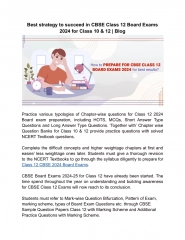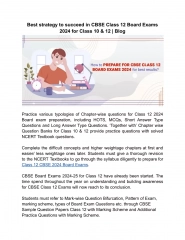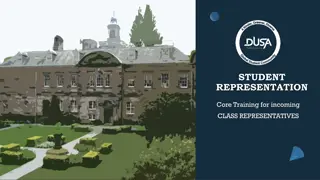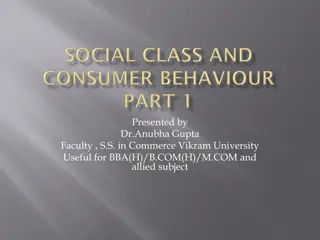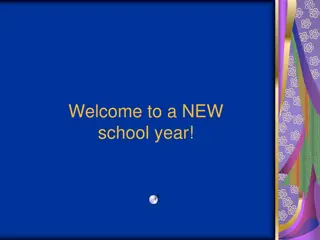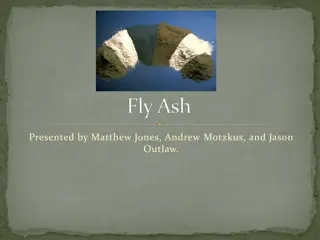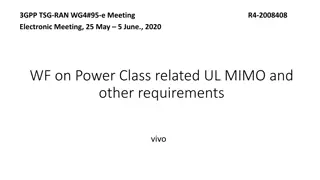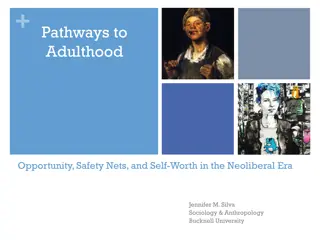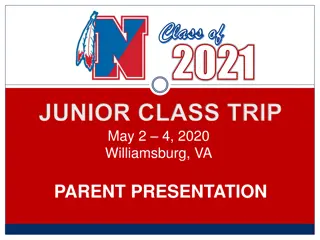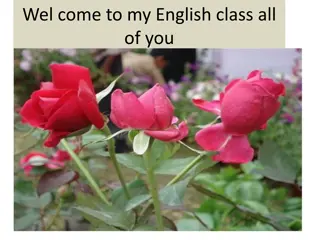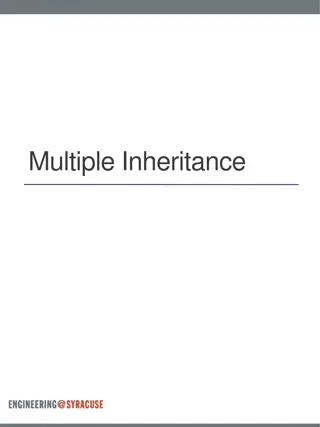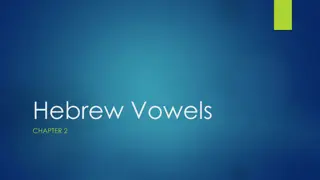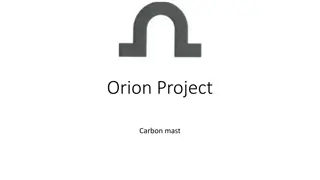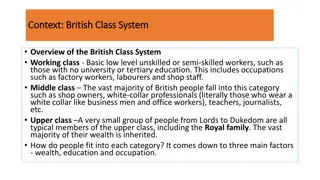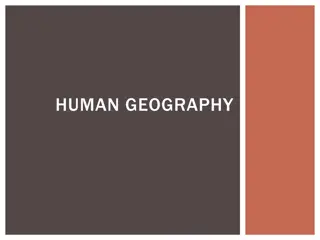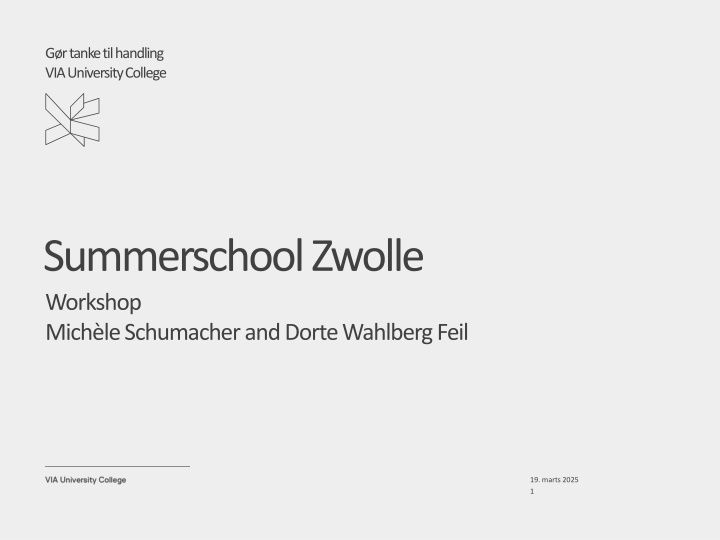
Exploring Movement Development and the Bio-Psycho-Social Model
Discover the intricate relationship between movement development and the Bio-Psycho-Social model through theory, practical work, and discussions. Learn about the concept of Flow, stages of movement development, and the role of movement in psychomotor therapy. Embrace the holistic approach to healthcare proposed by George L. Engel in 1977. Join us in a transformative journey towards understanding the significance of movement in our lives.
Download Presentation

Please find below an Image/Link to download the presentation.
The content on the website is provided AS IS for your information and personal use only. It may not be sold, licensed, or shared on other websites without obtaining consent from the author. If you encounter any issues during the download, it is possible that the publisher has removed the file from their server.
You are allowed to download the files provided on this website for personal or commercial use, subject to the condition that they are used lawfully. All files are the property of their respective owners.
The content on the website is provided AS IS for your information and personal use only. It may not be sold, licensed, or shared on other websites without obtaining consent from the author.
E N D
Presentation Transcript
Gr tanke til handling VIA University College Inds t nyt ikon hvis Summerschool Zwolle Workshop Mich le Schumacher and Dorte Wahlberg Feil Inds t hj lpelinjer til H jre klik udenfor slidet 19. marts 2025 1 Skriv titel p pr sentation
Move to be from cradle to cradle Theme Bio-psycho-social model Theory and discussion of movement development Warm-up Exploration and practical work (individual and partner) Lunch break 90 minutes Theory and discussion of Laban Brain dance Discussion dance and movement flow Dance in pairs and groups Wrap-up and conclusions
The bio-psycho-social model BPS 19.03.2025 3
The bio-psycho-social model George L. Engel proposed a biopsycosocial model for health care in 1977 Envisioned a model that includes the patient as well as the illness (p. 133). BPS is both a philosophy of clinical care and a practical clinical guide(Borrell-Carri , 2004) a way of understanding how suffering, disease, and illness are affected by multiple levels of organization, from the societal to the molecular (Borrell-Carri , 2004) 19.03.2025 4
Flow Let it happen Alignment body/mind Harmony Spiral Time perception Optimum of effort
Flow Wheninformationthatentersconsciousnessis alignedwiththeaims, thenpsychicenergyflows withouteffort(...) These aresituationswhere attentionisfreelyavailabletoachievea personal goal-becausethereisnochaoswhichhastobe elimintated, nothreatagainsttheselfagainstwhich youhavetodefendyourself. Csikszenmihaly, Mihaly
Stages ofmovmentdevelopment Points ofsupport Joints Pelvisandhead Cross themedian lineandrolling Creep Move on all 4 Sit, stand andwalk Work bySolioz, Vanessa
Movement asa psychomotor medium Observation/diagnostic Therapeuticalaimandmedium Awareness ofourownmovementbiography Ourbodyasan instrumentofresonance Strengthenourresourcesasa therapist
Movement trajectory Points of support Time Transfer of weight Spiral Space Body Straight line Strength
Reflection Reflectionofourexperiencesenablestointegratetheinformationi.e. neuro-biologically, emotionallyandtomakepersonal sense out ofit. Itis a pre-requisite in ourworkas therapist. Biology: Howdo I perceivemybody throughmysenses? Howdo I preceivemybody throughproprioception? Psychology: Howdo I feelemotionally? Joy, fear, resistancesetc. Howam I congruenti.e. emotionswithexpressionofmymovements? Social: Howdo I reachout andcomeback tomyself? Howdo I makecontact? Mirrorneurons.
Rudolf Van Laban Keywords: expressive dance, free dance, free movement, creative dance, therapeutic dance Born in Austria/Hugary 1879-1958 Son of an officer, is in the army Scientist, teacher, artist, social activist, visionary, creator = MULTI artist Established choreutics language of movement Free of style, positions, outer conventions. Fundamental principles in life instead of techniques. Laban philosophy
Rudolf Van Laban When movement is practised in its wholeness, as a concerted functioning of the body-mind, it is spoken of af the art of movement (Redfern, 1965).
Labans BESS concept THE BODY ARCHITECTURE CONNEXIONS IN THE BODY MUSCLES, JOINTS, BODY SEGMENTS DYNAMICS, QUALITIES ENERGY INNER ATTITUDE, TIME, SPACE, WEIGHT FLOW BODY BODY EFFORT EFFORT SHAPE SPACE SHAPE SPACE FORM, FORMING PIN, WALL, BALL SIRAL KINESPHERE DIMENSIONS TRACE FORM LEVEL ZONES REACH SPACE KINESPHERE PATHWAYS PERS-/GEN. SPACE Konie, Robin(2011): A brief overview of Laban movement analysis 19.03.2025 13
The kinesphere and levels 19.03.2025 14
BODY AND BRAINDANCE The ontogenesis reflects the phylogenesis Braindance is 8 patterns based on child development. Created by Ann Green Gilbert, creative dance, USA. Breathing Tactile Core - distal Head tale Upper unit lower unit Body halves Homolateral - contralateral Vestibular 19.03.2025 15
Dance can raise levels of physial and mental wellbeing and social contact (Kierr, 2011 in Frogget, 2012). has an effect on depression and anxiety (Payne and Scott, 2010 in Frogget, 2012). Listening to music can reduce agitated behaviour in people with dimentia (Sung and Chang, 2005 in Frogget, 2012) and increase social engagement (Harrison et al, 2010 in Frogget 2012).
Dance contrast Emotions Social attunement Rhythm Transfer of weight Ritual Connection Lead and follow
The tiny dance Helle Winther et al(2014): The Dancing Nurses and the Language of the body: Caring = a tiny dance in which the patient is the nurse s teacher. A co-creation between two persons in a specific relationship. An every dance spoken through very small bodily signals. 19.03.2025 18
The embodied professional 1.Self-contact and somatic awareness: Grounding, centering, To be able to be in emotional contact with one s own body, by working with grounding exercises, centering e.g. 2.Communication reading and contact ability: How to sense-read bodily communication and also to create trustful and empathic contact with others. For example eye contact, body contact, getting closer to others. 3. Leadership: Leadership in groups or situations demands a healthy and bodliy based person of authority. Take and hold a space/ room and at the same time be aware of both selfcontact, somatic awareness and embodied communications. Winther, Helle, el al (2014) 19.03.2025 19
References Bartenieff, Irmgard( 1980): Body movement Frogget, Lynn & Little, Robert(2012): Dance as a complex intervention in a acute mental health setting: a place in-betweeen . Csikszenmihaly, Mihaly (1990). Flow. Das Geheimnis des Gl cks. S.61/62. Klett-Cotta. Halprin, Anna (2009). KieserGestalten. Tanz Prozesse Gestalten Laban, Rudolf Van: The Language of Movement guidebook to choreutics Redferm, Betty (1965): Introducing Laban art of movement Konie, Robin(2011): A brief overview of Laban movement analysis Borell-Carri , Francesc et al(2004): The Biopsychosocial Model 25 Years Later: Principles, Practice, and Scientific Inquiry. Solioz, Vanessa (2013). Editions M decineet Hygi nepourl ditionfran aise. Eveil psychomoteurdu tout-petit. Ch ne-Bourg. Winther, Helle et al (2015): The Dancing Nurses and the Language of the Body, Journal of Holistic Nursing. Rhythmisit!Youcanchangeyourlifein a danceclass. Movie. 19.03.2025 20

